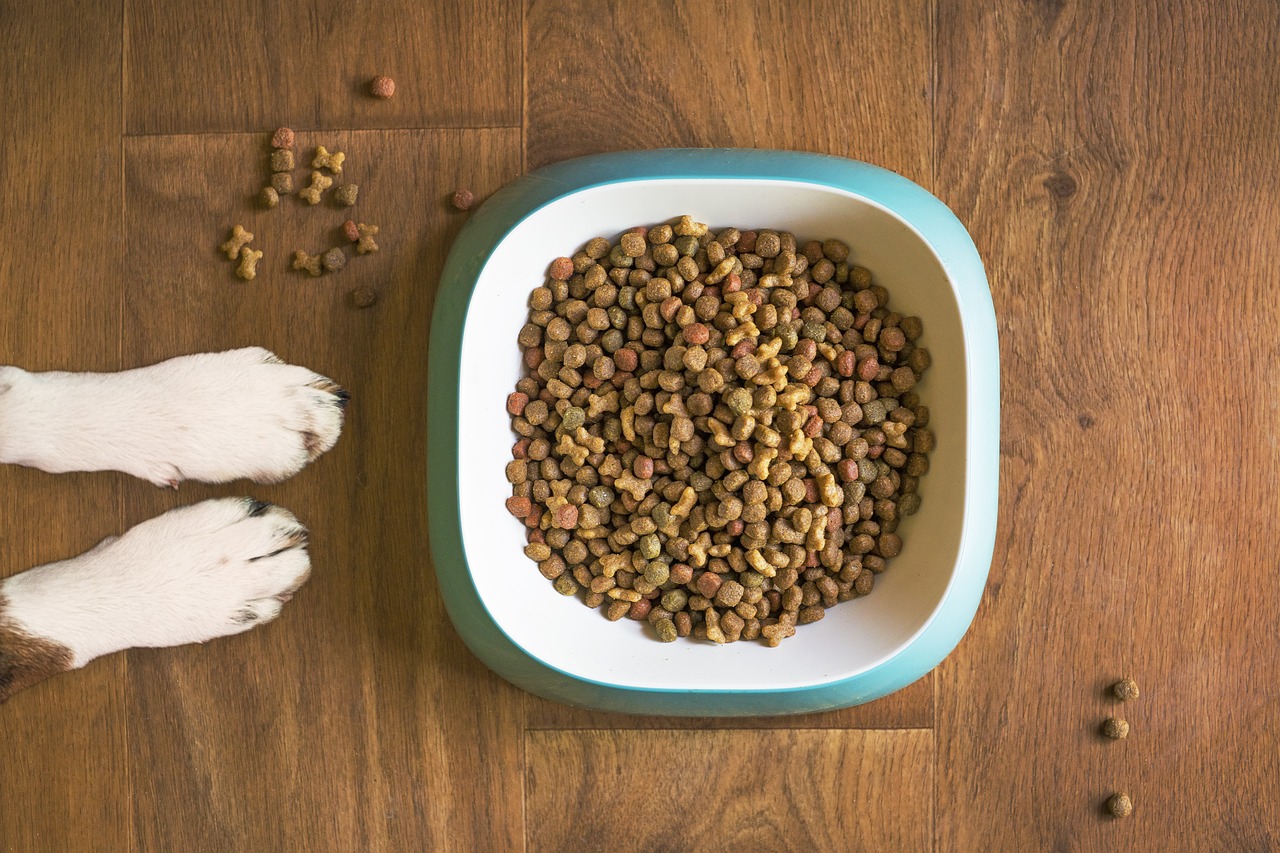
Dealing with Obesity in Dogs: Healthy Treats for Weight Loss
Obesity in dogs is becoming a common health concern among pet owners, with many dogs carrying excess weight due to overfeeding, lack of exercise, and unhealthy treats. Just like in humans, obesity in dogs can lead to a host of serious health issues, including heart disease, joint problems, diabetes, and a reduced quality of life. As a dog owner, it’s important to recognize the signs of obesity and take proactive steps to help your pet maintain a healthy weight. One of the most effective ways to manage your dog’s weight is by carefully selecting healthy treats designed to aid weight loss.
In this comprehensive guide, we’ll discuss the causes of obesity in dogs, how to identify if your dog is overweight, and offer solutions in the form of healthy, low-calorie treats that can help your dog shed those extra pounds.
1. Understanding Canine Obesity
Before diving into healthy treat options, it's important to understand what obesity in dogs looks like and the potential consequences. Obesity occurs when a dog has an excessive amount of body fat, generally caused by consuming more calories than they burn. This excess energy is stored as fat, which over time leads to weight gain.
Common Causes of Obesity in Dogs:
- Overfeeding: Many dog owners overestimate the amount of food their pets need. Free-feeding or providing extra portions beyond their caloric needs leads to weight gain.
- Lack of Exercise: Dogs that don’t get enough physical activity can easily gain weight, especially in households where they are not walked regularly or engaged in active play.
- Unhealthy Treats: Treats high in calories, fats, and sugars can contribute significantly to your dog’s daily calorie intake, tipping them into weight gain territory.
- Breed Predisposition: Certain dog breeds, such as Labradors, Dachshunds, and Beagles, are genetically predisposed to gain weight more easily than others.
Health Risks Associated with Canine Obesity:
- Joint and Mobility Issues: Extra weight places undue pressure on a dog’s joints, leading to arthritis, hip dysplasia, and other mobility issues.
- Heart Disease: Obesity increases the risk of cardiovascular problems, as the heart must work harder to circulate blood.
- Shortened Lifespan: Overweight dogs are at risk of a shorter lifespan due to complications from obesity-related diseases.
2. Is Your Dog Overweight?
Before changing your dog’s diet or treat routine, it's essential to know if your dog is indeed overweight. This can be done through observation, as well as consulting with your veterinarian for an accurate assessment.
Signs Your Dog May Be Overweight:
- Loss of a Visible Waistline: A healthy dog should have a defined waist when viewed from above. If your dog’s body is more rounded or barrel-like, this could be a sign of weight gain.
- Difficulty Feeling Ribs: You should be able to feel your dog’s ribs with gentle pressure. If you can’t feel them easily, your dog may be carrying extra fat.
- Reduced Activity: Dogs that are overweight often tire easily and may show less interest in activities they once enjoyed.
Veterinary Confirmation:
A veterinarian can evaluate your dog’s weight using a body condition scoring system, which assesses the dog’s fat-to-muscle ratio. Based on this score, your vet can recommend a target weight and provide feeding and exercise guidelines.
3. Healthy Treats for Weight Loss
When trying to manage your dog’s weight, it’s crucial to be mindful of treats. Many store-bought dog treats are loaded with calories, unhealthy fats, and artificial ingredients. The good news is that there are plenty of healthy, low-calorie treats that can be part of your dog’s weight loss plan without sacrificing taste.
1. Low-Calorie Commercial Treats
Many pet food companies now offer low-calorie or weight management treats designed for overweight dogs. These are great alternatives to regular treats as they are formulated to be filling but not fattening.
- Lean Meat-Based Treats: Look for treats that are made from lean meats like chicken or turkey. These offer protein without excessive fat.
- Vegetable-Based Treats: Some commercial treats are made from vegetables like sweet potatoes, carrots, or green beans, offering a satisfying crunch without the added calories.
- Grain-Free or Low-Fat Treats: Many weight management treats are grain-free and lower in fats, which can help keep your dog’s calorie intake in check.
2. Homemade Low-Calorie Dog Treats
Making homemade treats allows you to control the ingredients, ensuring they are nutritious and low in calories. Here are some easy recipes for weight loss-friendly treats:
- Pumpkin Bites: Pumpkin is high in fiber, which helps with digestion and makes dogs feel fuller for longer. Mix canned pumpkin (not the sweetened kind) with oats and bake into bite-sized treats.
- Carrot and Apple Chews: Slice carrots and apples into thin pieces and bake them to make crispy, low-calorie chews. Both carrots and apples are rich in vitamins and fiber.
- Chicken Jerky: Thinly slice lean chicken breast and bake it slowly to create a delicious, high-protein, low-fat treat. Be sure to avoid adding any salt or seasoning.
3. Vegetable-Based Snacks
Vegetables can be an excellent option for dog treats, particularly for dogs on a diet. They are low in calories, high in fiber, and offer various vitamins and minerals.
- Carrot Sticks: Crunchy and low in calories, carrots are a favorite among dogs. Plus, they help clean your dog’s teeth.
- Green Beans: Raw or steamed green beans are another healthy, low-calorie option.
- Cucumber Slices: Cucumbers are hydrating, low in calories, and perfect for a refreshing treat.
- Sweet Potatoes: Thinly sliced and baked, sweet potatoes offer a naturally sweet flavor that many dogs love. They are also high in fiber and vitamins.
4. Managing Portion Control with Treats
Even healthy treats can contribute to weight gain if given in large quantities. Portion control is key when managing your dog’s weight. Make sure to account for the calories in treats by reducing the amount of food you feed at meal times or using small, bite-sized treats instead of large ones.
Tips for Portion Control:
- Break Treats into Small Pieces: A large treat can be split into smaller pieces to extend the reward without adding too many calories.
- Use Treats Sparingly: Treats should be reserved for special occasions, training rewards, or as a complement to a healthy, well-balanced diet.
- Measure the Treats: Keep track of the number of treats given throughout the day and adjust your dog’s meals accordingly to avoid overfeeding.
5. Incorporating Healthy Treats into a Weight Loss Plan
A successful weight loss plan for your dog involves more than just choosing the right treats. It requires a combination of a balanced diet, proper portion control, and regular exercise. Here’s how to incorporate treats into an overall weight loss plan:
Balanced Diet:
Ensure your dog is eating a well-rounded, nutritionally complete dog food formulated for weight management. These foods are often lower in calories but still provide the necessary nutrients your dog needs.
Exercise:
Regular exercise is essential for weight loss. Whether it's daily walks, runs, or play sessions, increasing your dog’s activity level will help them burn off excess calories. Use healthy treats as rewards during playtime or training exercises.
Limit High-Calorie Foods:
In addition to healthy treats, avoid high-calorie table scraps or treats high in sugar, fat, or artificial ingredients. Be cautious of products like peanut butter, which many owners use for stuffing toys or disguising pills – it can be very calorie-dense.
6. Monitoring Progress
Regularly monitoring your dog’s progress is crucial to achieving and maintaining a healthy weight. Weigh your dog every two to four weeks to track weight loss, and adjust treats and portion sizes as necessary.
Veterinary Support:
Your veterinarian can help you create a weight loss plan and provide regular check-ups to ensure your dog is losing weight at a healthy pace.
Keep a Treat Diary:
Keep a diary of the treats you give your dog each day, including portions and types. This can help you better understand how treats affect your dog’s weight and identify areas for improvement.
7. Maintaining a Healthy Weight Long-Term
Once your dog reaches its ideal weight, it's important to maintain those healthy habits. Continue offering low-calorie treats, keep portion sizes in check, and ensure your dog gets enough exercise. Preventing weight gain is easier than having to address obesity again later on.
Final Thoughts
Helping your dog lose weight doesn't mean depriving them of tasty treats. By choosing healthy, low-calorie options and practicing portion control, you can ensure your dog enjoys snack time while staying on track with their weight loss journey. Whether you opt for store-bought treats designed for weight management, homemade goodies, or vegetable snacks, the key is to offer nutritious options that support your dog’s health.
With a combination of a balanced diet, regular exercise, and healthy treats, your dog can achieve a healthy weight and live a longer, happier life. Always consult your veterinarian before starting any weight loss plan for your pet, and make gradual adjustments to ensure long-term success.
